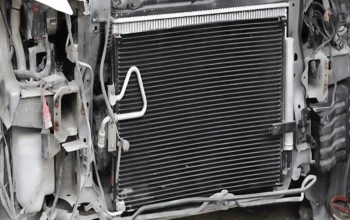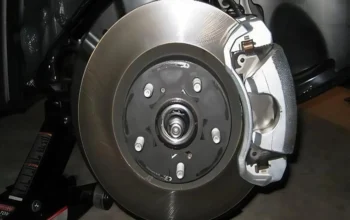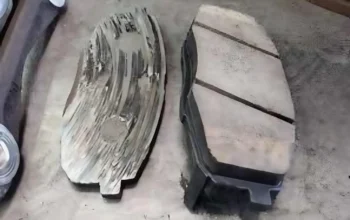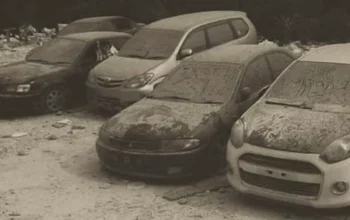Dealing with a radiator leak can feel stressful—especially when you notice signs like coolant loss or an overheating engine. But the good news? You don’t always have to rush to a mechanic. With a few tools and some patience, you can fix a car radiator at home using simple methods. This guide walks you through how to fix a car radiator leak at home, spot the signs early, and prevent further damage with easy DIY steps.
If you’re experiencing coolant dripping or steam coming from the hood, chances are you’re dealing with a leaking radiator. Don’t ignore it—this problem can escalate fast, causing serious damage to your engine. Let’s break down exactly what to do and how to handle it yourself.
Table of Contents:
What Causes a Radiator Leak?
Before jumping into the fix, it’s smart to know what’s causing the leak in the first place. Here are the most common reasons:
- Loose Radiator Cap: A cap that doesn’t seal properly can allow coolant to escape.
- Cracks in the Radiator Walls or Corners: These are often caused by age, pressure, or impact.
- Severe Internal Damage: Internal rust or corrosion can eat away at the metal.
Knowing the cause helps you choose the right repair method and prevent future issues.
How to Find the Source of a Radiator Leak
Before fixing anything, you need to locate the exact spot where the radiator is leaking. Here’s how:
1. Visual Inspection
Carefully check the radiator surface. Look for any cracks, wet spots, or white residue from dried coolant.
2. Soap and Water Test
Mix soap with water, spray it on the radiator surface, and start the engine. If you see bubbles forming, that’s a leak.
3. Use a Leak Detection Tool
There are UV dyes and pressure test kits available online or at auto stores. These help pinpoint tiny leaks that might not be visible right away.
Step-by-Step: How to Fix a Car Radiator Leak at Home
1. Tighten the Radiator Cap
A loose or damaged cap is one of the simplest causes of leaks. If the seal isn’t tight, pressure builds up and coolant escapes. Replacing or tightening it can solve the issue instantly.
2. Patch the Leak with Adhesive
If you find a crack or hole:
- For plastic radiators, use an epoxy adhesive like Araldite.
- For metal or aluminum radiators, go with a metal bonding agent or cold-weld epoxy.
Make sure the surface is dry and clean before applying the glue. Let it cure for at least a few hours or as recommended on the label.
3. Use a Radiator Stop Leak Additive
You can buy stop leak solutions at most auto supply stores. Just pour the liquid into the radiator as directed. It flows with the coolant and seals small cracks from the inside.
Tip: This is more of a temporary fix, especially for small leaks.
4. Replace the Radiator if Severely Damaged
If the radiator is badly cracked, rusted, or leaking in multiple places, it’s time to replace it. DIY replacement is possible if you’re comfortable removing car parts, but it’s okay to call in a pro for this one.
Extra Tips to Prevent Radiator Leaks
Keeping your radiator healthy is way easier than fixing a leak. Here are some quick maintenance tips:
1. Check Coolant Levels Regularly
Low coolant levels often point to a leak. Make it a habit to check the reservoir every couple of weeks.
2. Use High-Quality Coolant
Cheap or improper coolant can cause corrosion inside your radiator. Always use the one recommended by your car’s manufacturer.
3. Flush Your Radiator Periodically
A coolant flush every 1–2 years helps remove debris and build-up inside the radiator, preventing blockages and corrosion.
What Happens if You Ignore a Leaking Radiator?
Putting off a radiator fix is risky. Here’s what could go wrong:
- Engine Overheating: Without enough coolant, the engine can overheat and fail.
- Warped Cylinder Head: Extreme heat can bend engine parts.
- Expensive Repairs: What starts as a $10 sealant job could turn into a $1,000 engine repair.
When to Call a Mechanic
Not every radiator issue is DIY-friendly. Call a professional if:
- The radiator is leaking from multiple spots
- You’ve tried sealing it, but it’s still leaking
- You see white smoke coming from the exhaust (might indicate engine damage)
- The car overheats even after topping off the coolant
Final Thoughts
Learning how to fix a car radiator leak at home is a great skill to have. Not only does it save money, but it can also prevent your car from breaking down at the worst possible time. Whether it’s tightening a loose cap or patching up a minor crack, every small fix helps keep your car running smoothly.
Stay alert for the early signs of a car radiator leak, and don’t wait until your engine overheats to take action. With these tips, your DIY car fix will be quicker and easier than you thought. **






